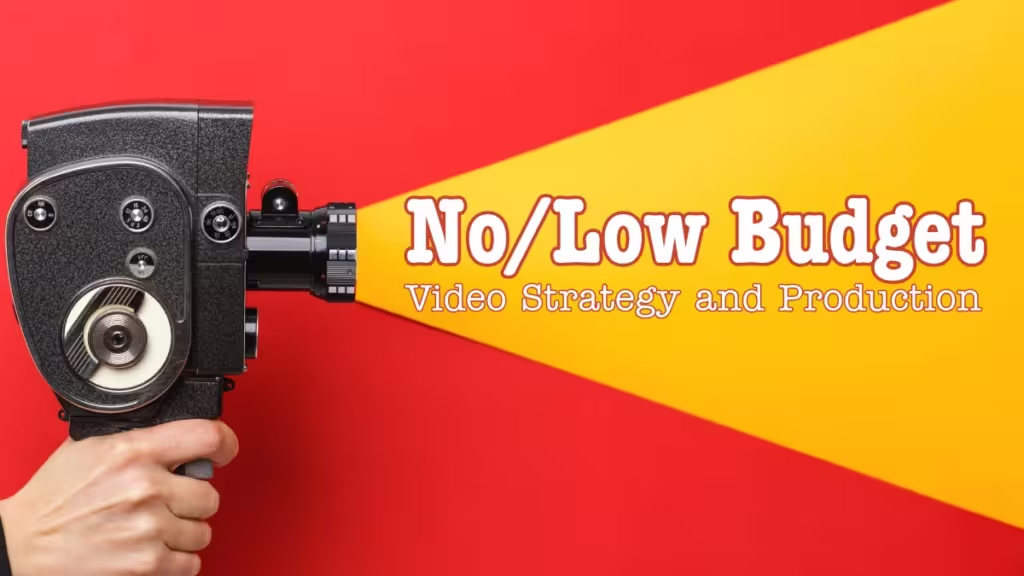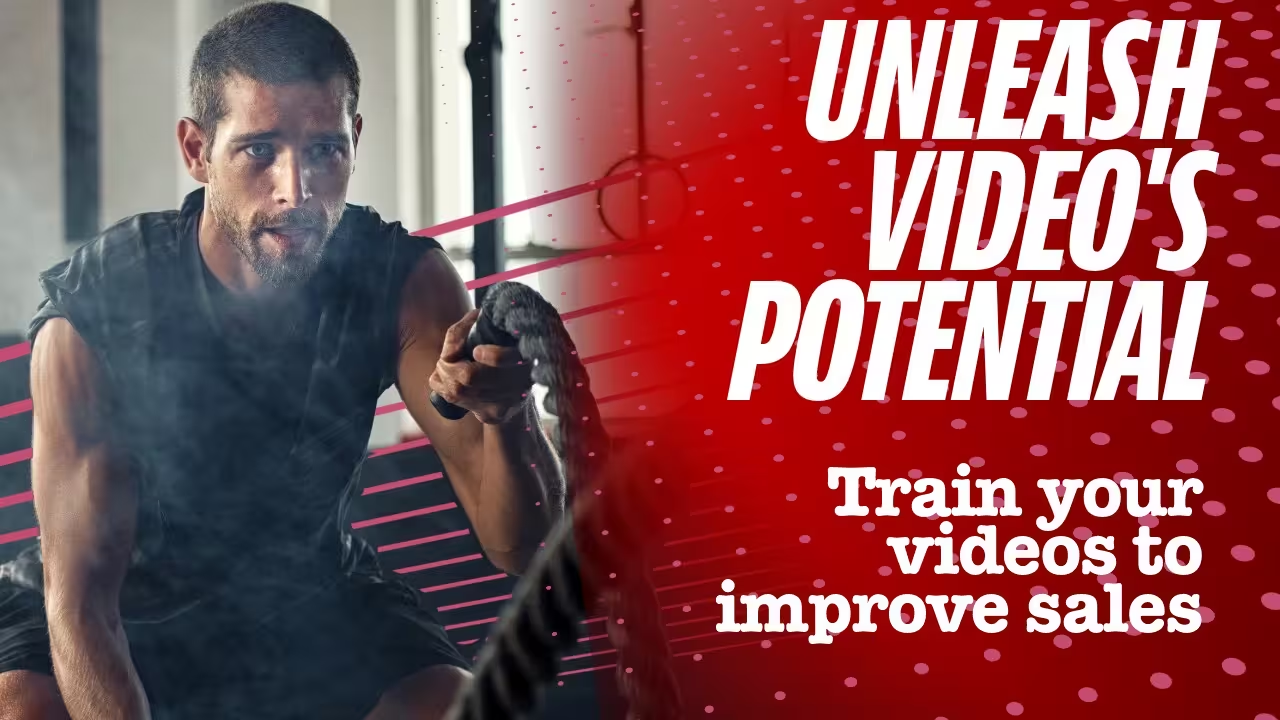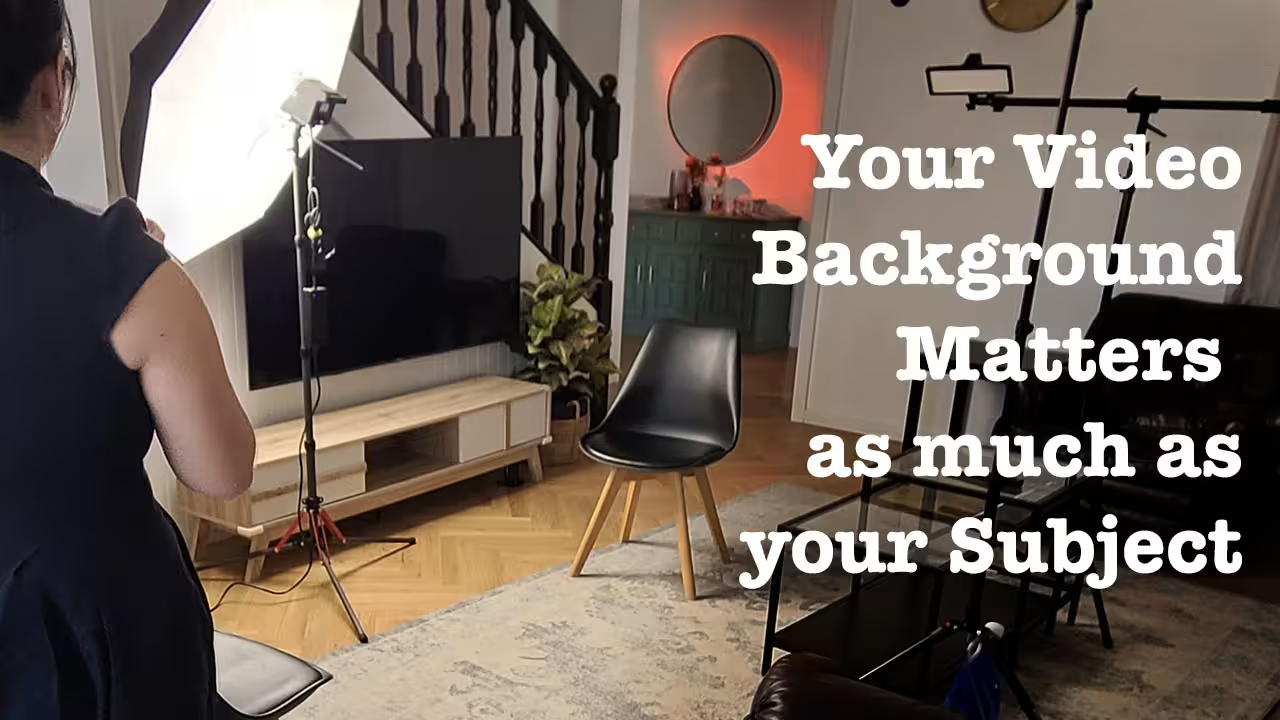No Budget or Low Budget Video Content Strategy and Video Production??? Yes, You Can Do It!
The Reality Check: Tight Budgets, Tough Economy
I know things aren’t looking great economically, and businesses everywhere are tightening their belts. When the budget cuts roll in, marketing is often the first to go. But hold up—before you slash your marketing dollars, let’s pause. Marketing is the one thing that can keep your business afloat in the long run.
So, yeah, it’s not the part you want to cut, especially when it comes to video content.
But hey, I get it. You’re looking at your budget (or what’s left of it) and thinking: I don’t have the money for a video content strategy, let alone to make videos! The good news is, you don’t need to spend a fortune. In fact, I’m going to show you how to build a No or Low Budget Video Content Strategy and make videos that won’t break the bank.
And you can do it all by yourself.
Sound good? Let’s dive in.
Step 1: Set Clear Objectives (Because Winging It Won’t Cut It)
Before you even think about picking up a camera, you’ve got to get your objectives straight. What do you want your videos to actually do? Without a clear goal, you’re just shooting in the dark, and trust me, you don’t want to waste your time or effort.
This the video strategy part. Here are some goals to consider:
- Boost brand awareness
- Drive traffic to your site
- Generate leads
- Increase sales and conversions
- Educate your customers
- Keep your existing customers happy and engaged
Whatever your goal is, write it down. It the direction of your video content strategy. It’s going to help guide everything from the type of videos you make to where you post them.
Oh… don’t say I want to do all of them… because when you try to do everything, you end up with a lot of not very goods.
To properly strategise, pick one or 2 goals every 2 to 3 months, and be consistent about it for the duration before moving on.
Step 2: Know Your Audience (Hint: It’s All About Them)
This one’s crucial. Even if your budget is tight, you have to know who you’re talking to. The more you understand your audience, the better your videos will connect with them—simple as that. So dig into the details:
- Demographics: Age, location, job title—get specific.
- Interests: What are they into? What makes them tick?
- Challenges: What problems are they trying to solve?
- Content habits: Are they scrolling through TikTok at midnight, or do they spend their lunch breaks on YouTube?
When you’ve got a clear picture of who’s watching, you can tailor your videos to fit their needs, and that’s half the battle.
Typically, Step 1 and 2 are not co-dependent. Your audience can inform your goal, and vice-verse.
For example, a kids educational product may want to target the kids’ through a brand awareness campaign, but you know that they will not be the ones buying it. They will convince their parents to buy it.
The parents will want to know more about what the product actually does, which is an education campaign.
So you can tackle both for an extended 4 to 6 months period in your video strategy, to first drive brand awareness, then educate. Each goal of the strategy targets a different audience, which will then allow you to go to step 3.
Step 3: Pick the Right Video Types
Here are a few video types you can create:
- Product demos: Show off what makes your product awesome.
- Explainer videos: Break down complex concepts in a way your audience will appreciate.
- Customer testimonials: Ask happy customers to shoot a quick video—super powerful and authentic.
- Behind-the-scenes: People love seeing what goes on behind the curtain.
- Tutorials: Teach them something useful, and they’ll keep coming back.
- Live streams: No editing, just real-time interaction. Plus, it’s a great way to engage with your audience directly.
It’s important to remember that these videos are not mutually exclusive. You can have a brand awareness product demo, just as much as Customer Testimonial that shows the behind the scenes of how your product works.
So be creative and mash up some video types. The great thing about the mashup is that it can mean that you can shoot your video once, and then edit it in multiple ways to suit different purposes and/or audiences.
Step 4: Plan Your Content (Without Overcomplicating It)
You might not be spending much on production, but planning is still key. A simple content calendar can keep you organized, so you’re not scrambling to figure out what to shoot each week. Think about your video topics, key messages, and how everything fits your brand.
Pro tip: Tie your videos into upcoming product launches, events, or customer questions you’re getting. The goal here is to stay relevant and keep things flowing.
While we do say that you should stick to your video content strategic plan, you should leave room from some flexibility to react to, say, pertinent customer questions about your product what you didn’t think about when you started the campaign.
Generally, you should have your content plan that will run for at least 2 months or so to really get traction for that goal.
Step 5: Choose the Right Distribution Channels (Hint: Most Are Free)
Once your videos are ready, where do you post them? The answer: wherever your audience hangs out, and the best part? These platforms are free. Here are some to consider:
- YouTube: It’s free, and it’s the second-largest search engine in the world; PLUS almost all search engines rank highly, serve up relevant YouTube videos for search terms. Need I say more?
- Social Media: Instagram, TikTok, Facebook—different platforms attract different demographics, so go where your audience is.
- Your Website: Embed videos on landing pages, product pages, or even in blog posts like this one.
- Email: Share your videos directly with your subscribers. It’s a great way to drive engagement without any extra costs.
Distribute your content far and wide. It’s the quickest way to get your message out there without blowing through your budget.
Step 6: Simplify Production (No Studio? No Problem)
You don’t need to hire a professional production team to create quality videos. Here’s how to make your videos look good without spending a fortune:
- Lighting: Natural light is your friend. Film near windows or head outside. If it’s dark, grab an affordable LED lights that add ambience and light up your subjects.
- Audio: Invest in a basic mic if you can. Trust me, good sound goes a long way. Regardless of which, just make sure your environment that you are recording any voice, is quiet.
- Branding: Be consistent with your colors, fonts, and overall vibe. If your audience recognizes your look, they’ll know it’s you before they even hit play.
We will be creating another blog on how to make good videos with stuff you have around you.
Step 7: Measure What Matters (Because You Can’t Improve What You Don’t Track)
Now that your videos are live, how do you know if they’re working? You’ll want to track a few key metrics to gauge success:
- Views and watch time: Are people sticking around to watch your whole video, or are they dropping off after 10 seconds?
- Engagement: Are people liking, commenting, and sharing your videos?
- Click-through rates: Are they taking action after watching?
- Conversions: Are your videos helping drive sales, leads, or whatever action you set as your main goal?
We have written about how to use Watch time, or Retention rates to know how effective your videos are.
Use these metrics to refine your strategy as you go. Not every video will be a home run, but learning what works (and what doesn’t) will help you create better content over time.
Step 8: Optimize and Iterate (There’s Always Room to Improve)
Every video is a chance to learn something new. Maybe short-form content works better for your audience, or maybe they love live streams. Whatever the case, be ready to pivot and tweak your approach. The best video strategies evolve, and so should yours.
Conclusion: You Don’t Need Big Budgets to Make Big Impact
At the end of the day, a tight budget doesn’t mean you can’t create effective, engaging video content. With a clear strategy, smart planning, and a little creativity, you can start building a video content library that helps grow your business—even in tough times. It’s not about having the best equipment or the most polished production; it’s about connecting with your audience, staying consistent, and delivering value.
So, what are you waiting for? Grab your phone and start shooting!




